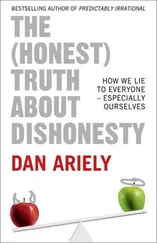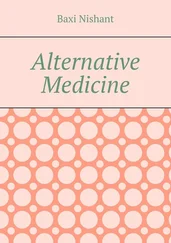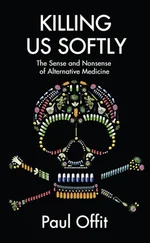There is one episode from the history of medicine that illustrates particularly well how an evidence‑based approach forces the medical establishment to accept the conclusions that emerge when medicine is put to the test. Florence Nightingale, the Lady with the Lamp, was a woman with very little reputation, but she still managed to win a bitter argument against the male‑dominated medical establishment by arming herself with solid, irrefutable data. Indeed, she can be seen as one of the earliest advocates of evidence‑based medicine, and she successfully used it to transform Victorian healthcare.
Florence and her sister were born during an extended and very productive two‑year‑long Italian honeymoon taken by their parents William and Frances Nightingale. Florence’s older sister was born in 1819 and named Parthenope after the city of her birth–Parthenope being the Greek name for Naples. Then Florence was born in the spring of 1820, and she too was named after the city of her birth. It was expected that Florence Nightingale would grow up to live the life of a privileged English Victorian lady, but as a teenager she regularly claimed to hear God’s voice guiding her. Hence, it seems that her desire to become a nurse was the result of a ‘divine calling’. This distressed her parents, because nurses were generally viewed as being poorly educated, promiscuous and often drunk, but these were exactly the prejudices that Florence was determined to crush.
The prospect of Florence nursing in Britain was already shocking enough, so her parents would have been doubly terrified by her subsequent decision to work in the hospitals of the Crimean War. Florence had read scandalous reports in newspapers such as The Times , which highlighted the large number of soldiers who were succumbing to cholera and malaria. She volunteered her services, and by November 1854 Florence was running the Scutari Hospital in Turkey, which was notorious for its filthy wards, dirty beds, blocked sewers and rotten food. It soon became clear to her that the main cause of death was not the wounds suffered by the soldiers, but rather the diseases that ran rife under such squalid conditions. As one official report admitted, ‘The wind blew sewer air up the pipes of numerous open privies into the corridors and wards where the sick were lying.’
Nightingale set about transforming the hospital by providing decent food, clean linen, clearing out the drains and opening the windows to let in fresh air. In just one week she removed 215 handcarts of filth, flushed the sewers nineteen times and buried the carcasses of two horses, a cow and four dogs which had been found in the hospital grounds. The officers and doctors who had previously run the institution felt that these changes were an insult to their professionalism and fought her every step of the way, but she pushed ahead regardless. The results seemed to vindicate her methods: in February 1855 the death rate for all admitted soldiers was 43 per cent, but after her reforms it fell dramatically to just 2 per cent in June 1855. When she returned to Britain in the summer of 1856, Nightingale was greeted as a hero, in large part due to The Times ’s support:
Wherever there is disease in its most dangerous form, and the hand of the spoiler distressingly nigh, there is that incomparable woman sure to be seen; her benignant presence is an influence for good comfort even amid the struggles of expiring nature. She is a ‘ministering angel’ without any exaggeration in these hospitals, and, as her slender form glides quietly along each corridor, every fellow’s face softens with gratitude at the sight of her.
However, there were still many sceptics. The principal medical officer of the army argued that Nightingale’s higher survival rates were not necessarily due to her improved hygiene. He pointed out that her apparent success might have been due to treating soldiers with less serious wounds, or maybe they were treated during a period of milder weather, or maybe there was some other factor that had not been taken into account.
Fortunately, as well as being an exceptionally dedicated military nurse, Nightingale was also a brilliant statistician. Her father, William Nightingale, had been broadminded enough to believe that women should be properly educated, so Florence had studied Italian, Latin, Greek, history, and particularly mathematics. In fact, she had received tutoring from some of Britain’s finest mathematicians, such as James Sylvester and Arthur Cayley.
So, when she was challenged by the British establishment, she drew upon this mathematical training and used statistical arguments to back her claim that improved hygiene led to higher survival rates. Nightingale had scrupulously compiled detailed records of her patients throughout her time in the Crimea, so she was able to trawl through them and find all sorts of evidence that proved that she was right about the importance of hygiene in healthcare.
For example, to show that the filth at Scutari Hospital had been killing soldiers, she used her records to compare a group of soldiers treated at Scutari in the early unhygienic days with a control group of injured soldiers who at the same time were being kept at their own army camp. If the camp‑based control group fared better than the Scutari group, then this would indicate that the conditions that Nightingale encountered when she arrived at Scutari were indeed doing more harm than good. Sure enough, the camp‑based soldiers had a mortality rate of 27 deaths per 1,000 c ompared with 427 per 1,000 a t Scutari. This was only one set of statistics, but when put alongside other comparisons it helped Nightingale to win her argument about the importance of hygiene.
Nightingale was convinced that all other major medical decisions ought to be based on similar sorts of evidence, so she fought for the establishment of a Royal Commission on the Health of the Army, to which she herself submitted several hundred pages of detailed statistics. At a time when it was considered radical merely to include data tables, she also drew multicoloured diagrams that would not look out of place in a modern boardroom presentation. She even invented an elaborate version of the pie chart, known as the polar area chart, which helped to illustrate her data. She realized that illustrating her statistics would be enormously helpful in selling her argument to politicians, who were usually not well versed in mathematics.
In due course, Nightingale’s statistical studies spearheaded a revolution in army hospitals, because the Royal Commission’s report led to the establishment of an Army Medical School and a system of collecting medical records. In turn, this resulted in a careful monitoring of which conditions and treatments did and did not benefit patients.
Today, Florence Nightingale is best known as the founder of modern nursing, having established a curriculum and training college for nurses. However, it can be argued that her lifelong campaigning for health reforms based on statistical evidence had an even more significant impact on healthcare. She was elected the first female member of the Royal Statistical Society in 1858, and went on to become an honorary member of the American Statistical Association.
Nightingale’s passion for statistics enabled her to persuade the government of the importance of a whole series of health reforms. For example, many people had argued that training nurses was a waste of time, because patients cared for by trained nurses actually had a higher mortality rate than those treated by untrained staff. Nightingale, however, pointed out that this was only because more serious cases were being sent to those wards with trained nurses. If the intention is to compare the results from two groups, then it is essential (as discussed earlier) to assign patients randomly to the two groups. Sure enough, when Nightingale set up trials in which patients were randomly assigned to trained and untrained nurses, it became clear that the cohort of patients treated by trained nurses fared much better than their counterparts in wards with untrained nurses. Furthermore, Nightingale used statistics to show that home births were safer than hospital births, presumably because British homes were cleaner than Victorian hospitals. Her interests also ranged overseas, because she also used mathematics to study the influence of sanitation on healthcare in rural India.
Читать дальше
![Edzard Ernst Trick or Treatment. The Undeniable Facts about Alternative Medicine [Electronic book text] обложка книги](/books/151762/edzard-ernst-trick-or-treatment-the-undeniable-fa-cover.webp)










